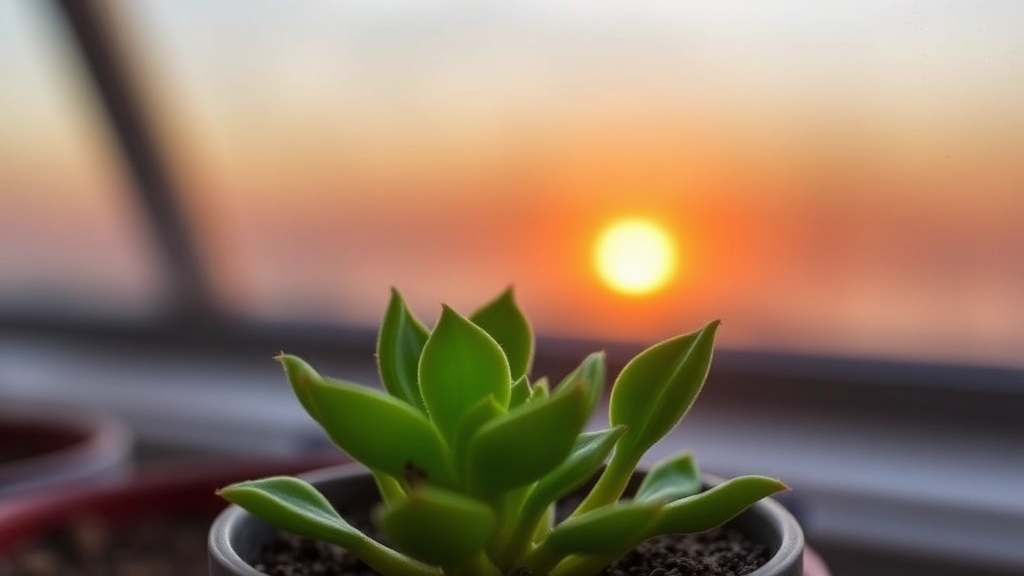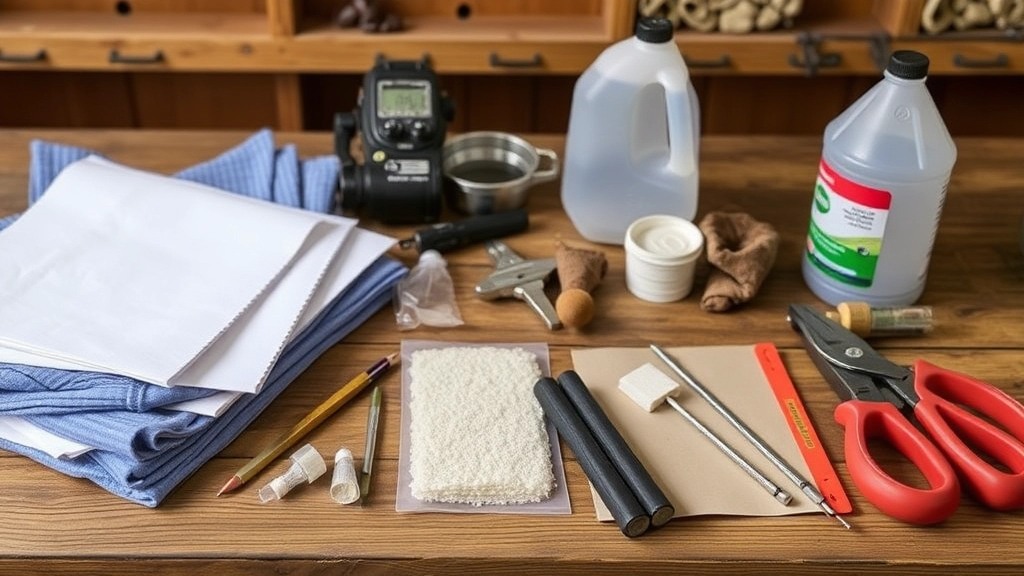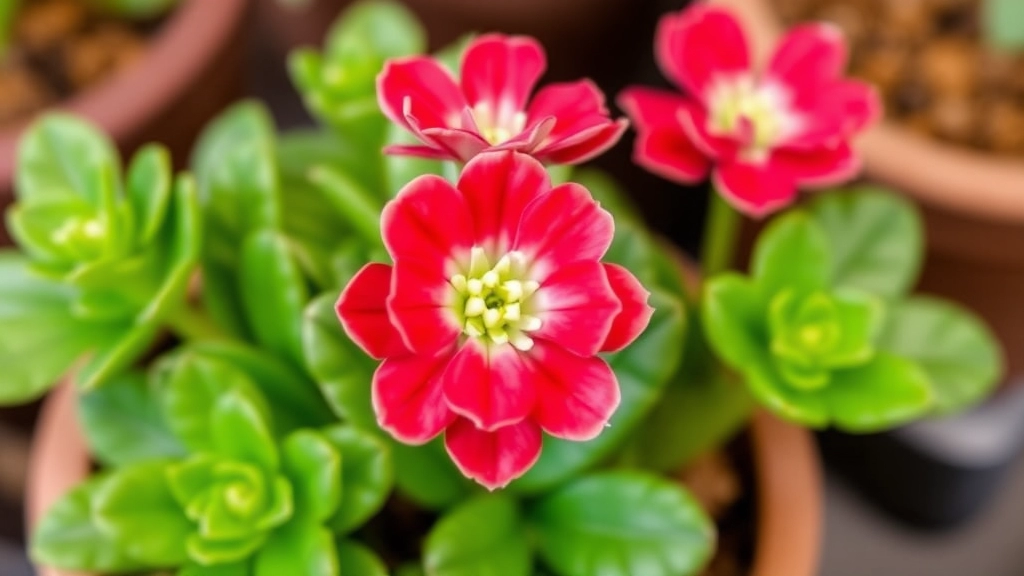Florist Kalanchoe Propagation
When it comes to florist kalanchoe propagation, there are several methods you can try to expand your plant collection. Whether you’re using stem cuttings, leaf cuttings, offsets, or seeds, each method has its unique process and benefits. Let’s dive into the best times and conditions for propagating kalanchoe to ensure the highest success rate.
Best Seasons for Propagation
Spring and summer are the ideal seasons for propagating kalanchoe. During these warmer months, the plants are in their active growth phase, making it easier for new roots to establish. With the right preparation, drying, planting, and aftercare, you can successfully propagate kalanchoe and enjoy a thriving collection of these beautiful plants.
Are you eager to expand your Kalanchoe collection but unsure how to get started? You’re not alone. Many plant enthusiasts face the challenge of propagation, often wondering about the best methods to ensure successful growth.
Kalanchoe plants can be propagated in several effective ways:
1. **Leaf Cuttings**
– **Select a healthy leaf** from the parent plant.
– **Cut the leaf** using a clean, sharp knife.
– **Allow the cut end to dry** for a few hours to form a callus.
– **Place the leaf** on well-draining soil, ensuring the cut end is in contact with the soil.
2. **Stem Cuttings**
– **Choose a healthy stem** with several leaves.
– **Cut the stem** just below a leaf node.
– **Remove the lower leaves** to prevent rot.
– **Let the cutting dry** for a few hours before planting it in soil.
3. **Offsets**
– Kalanchoe often produces offsets or “pups” at the base.
– **Gently separate the offset** from the parent plant.
– **Plant the offset** in its own pot with suitable soil.
4. **Leaf Propagation via Water**
– **Place a healthy leaf** in a glass of water.
– **Change the water regularly** to prevent stagnation.
– Once roots develop, **transfer it to soil**.
These methods are not only straightforward but also rewarding, allowing you to nurture new plants from your existing Kalanchoe. For more detailed guidance, you can refer to the [Kalanchoe Synsepala Propagation Guide](https://planthq.org/kalanchoe-synsepala-propagation-guide-tips-and-methods/) or learn specific techniques from the [How to Propagate Kalanchoe Pink Butterflies](https://planthq.org/how-to-propagate-kalanchoe-pink-butterflies-stepbystep-guide/).
Best Time for Propagation

When’s the best time to propagate Kalanchoe?
This is a common question, and it can make a big difference in your success rate.
Spring and Early Summer are the prime seasons for Kalanchoe propagation.
Here’s why:
- Active Growth Phase: During these months, the plant is in its growth spurt. It’s ready to root and thrive.
- Mild Weather: The temperatures are generally warmer, which helps in rooting.
- Longer Days: More sunlight means your cuttings will have the energy they need to establish themselves.
If you’re thinking about propagation in Autumn or Winter, it’s not impossible, but it’s trickier. The plant’s growth slows down, and you might not see the same success.
To make it easier, here’s a quick summary:
- Best Time: Spring and Early Summer
- Why: Active growth, mild weather, longer days
Step-by-Step Propagation Guide
When it comes to Kalanchoe propagation, many people find themselves wondering where to start.
This guide will simplify the process and ensure your success.
Step 1: Choose Your Method
You can propagate Kalanchoe through:
Necessary Materials and Tools

When considering how to propagate Kalanchoe, it’s essential to gather the right materials and tools to ensure a successful process.
Here’s what you’ll need:
- Healthy Kalanchoe Plant: Start with a robust parent plant to ensure quality cuttings.
- Sharp Clean Scissors or Shears: A clean cut reduces the risk of disease.
- Potting Mix: Use a well-draining soil mix, preferably one designed for succulents.
- Small Pots or Containers: Choose pots with drainage holes to prevent waterlogging.
- Rooting Hormone (Optional): This can encourage faster root development, though it’s not strictly necessary.
- Watering Can or Spray Bottle: For gentle watering and misting.
- Plastic Bag or Clear Plastic Dome: To create a humid environment for cuttings, promoting rooting.
Gathering these materials will set you up for success as you move into the propagation process.
Aftercare and Maintenance
Once you’ve successfully propagated your Kalanchoe, the next crucial step is ensuring its healthy growth through proper aftercare and maintenance. You might be wondering, “What do I need to do to keep my new plants thriving?”
Troubleshooting Common Issues
So, you’ve taken the plunge into Kalanchoe propagation, and things aren’t going as smoothly as you hoped?
Don’t worry; you’re not alone!
Here are some common issues you might face and how to tackle them:
1. Leaves Turning Yellow
- Overwatering: This is often the culprit. Ensure your pot has drainage holes and let the soil dry out between waterings.
- Nutrient Deficiency: If yellowing continues, consider a balanced fertiliser to give your plant a boost. For more detailed advice, check out the Yellow Kalanchoe Blossfeldiana Care Guide.
2. Stunted Growth
- Insufficient Light: Kalanchoes love bright, indirect sunlight. If they’re in a shady spot, move them closer to a window.
- Too Much Crowding: If you’ve propagated multiple cuttings in one pot, they might be competing for resources. Consider repotting them into separate containers. For propagation tips, see the Kalanchoe Blossfeldiana Propagation Guide.
3. Root Rot
- Signs: Look out for mushy stems or leaves.
- Solution: If you suspect root rot, remove the plant from the soil, trim the affected roots, and repot in fresh, dry soil.
4. Pests
- Common Pests: Mealybugs and aphids can be a nuisance.
- Treatment: Wipe them off with a damp cloth or use insecticidal soap for a more thorough approach.
5. Wilting Leaves
- Underwatering: If your Kalanchoe looks droopy, it might need a drink.
- Overwatering: Conversely, if the soil is soggy, it could be drowning. Adjust your watering schedule accordingly.
FAQs on Florist Kalanchoe Propagation
When is the best time to propagate Kalanchoe?
The best time to propagate Kalanchoe is during Spring and Early Summer. This period coincides with the plant’s active growth phase, mild weather, and longer days, all of which contribute to a higher success rate for rooting and thriving.
Can I propagate Kalanchoe in Autumn or Winter?
While propagation in Autumn or Winter is possible, it is more challenging. The plant’s growth slows down during these seasons, making it less likely to root successfully.
What materials and tools do I need for Kalanchoe propagation?
To ensure a successful propagation process, you’ll need the following materials and tools:
- Healthy Kalanchoe Plant: A robust parent plant for quality cuttings.
- Sharp Clean Scissors or Shears: To make clean cuts and reduce the risk of disease.
- Potting Mix: A well-draining soil mix, preferably designed for succulents.
- Small Pots or Containers: Pots with drainage holes to prevent waterlogging.
- Rooting Hormone (Optional): To encourage faster root development.
- Watering Can or Spray Bottle: For gentle watering and misting.
- Plastic Bag or Clear Plastic Dome: To create a humid environment for cuttings, promoting rooting.
Why is Spring and Early Summer the best time for propagation?
Spring and Early Summer are ideal for propagation because:
- Active Growth Phase: The plant is in its growth spurt and ready to root.
- Mild Weather: Warmer temperatures help in rooting.
- Longer Days: More sunlight provides the energy needed for cuttings to establish themselves.
Is rooting hormone necessary for Kalanchoe propagation?
Rooting hormone is not strictly necessary but can be beneficial. It encourages faster root development, making the propagation process quicker and potentially more successful.
What type of soil mix should I use for Kalanchoe propagation?
Use a well-draining soil mix, preferably one designed for succulents. This type of soil helps prevent waterlogging, which can be detrimental to the cuttings.
References
-
Gardening Know How: Propagating Kalanchoe
-
The Spruce: How to Grow Kalanchoe
-
Old Farmer’s Almanac: Kalanchoe
